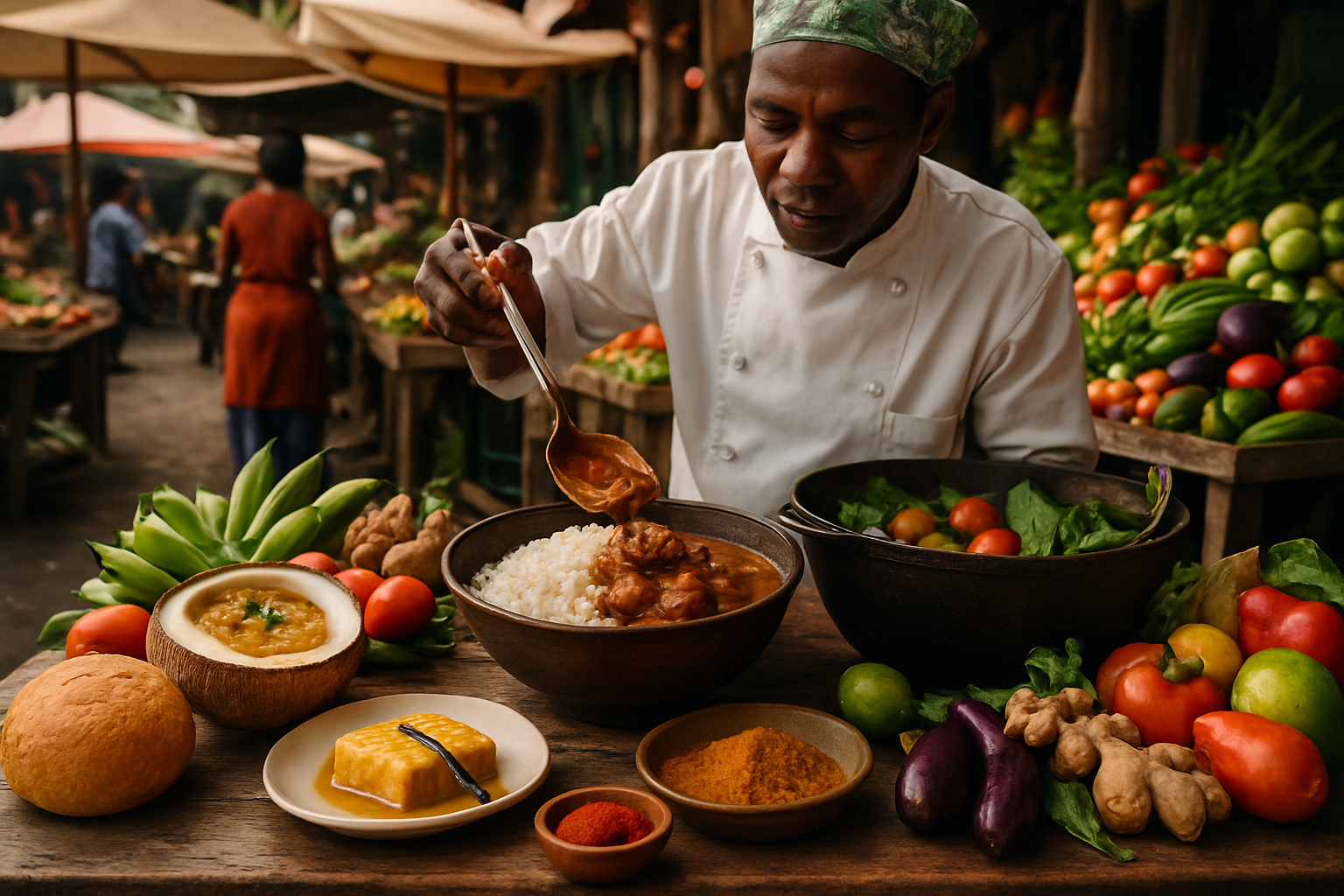Cultural Cuisine: What To Look For In Specialty Markets
Specialty markets offer a gateway to authentic cultural cuisines from around the world, providing access to ingredients, snacks, and dishes that are often unavailable in conventional grocery stores. These vibrant spaces showcase the culinary traditions of diverse communities, from aromatic spices and handmade noodles to unique condiments and ready-to-eat delicacies. Understanding what to look for in specialty markets can transform your cooking and dining experiences, introducing you to flavors and techniques that expand your culinary horizons while connecting you to rich food traditions.

Specialty markets dedicated to cultural cuisines provide an immersive experience that goes far beyond simple grocery shopping. These establishments serve as cultural hubs where tradition, authenticity, and community converge. Whether you are searching for specific ingredients to recreate a traditional recipe or simply exploring new flavors, knowing what to look for can make your visit more rewarding and help you discover products that will become staples in your kitchen.
Exploring Specialty Food Stores: Where To Find Unique Snacks And Dishes
Specialty food stores catering to specific cultural cuisines typically organize their inventory by category, making navigation easier once you understand the layout. Fresh produce sections often feature vegetables and herbs uncommon in mainstream supermarkets, such as daikon radish, bok choy, Thai basil, shiso leaves, and galangal. The refrigerated sections house fresh noodles, tofu varieties, dumplings, and prepared banchan or side dishes. Frozen aisles contain convenience items like pre-made dumplings, buns, and seafood products including whole fish, octopus, and specialty items like fish cakes.
Snack aisles reveal an extraordinary variety of flavors and textures. Look for rice crackers in numerous flavors, dried seaweed snacks, preserved plums, flavored mochi, Pocky sticks, shrimp chips, and regional specialties. These snacks often use ingredients and flavor combinations rarely found in Western products, offering sweet, savory, spicy, and umami-rich options. Many specialty markets also feature bakery sections with freshly made buns, pastries, and cakes that reflect traditional recipes and modern fusion creations.
Beyond Traditional Dishes: A Guide To Discovering Your Next Favorite Cuisine
Venturing beyond familiar dishes requires curiosity and willingness to experiment. Start by exploring condiment sections, which are treasure troves of flavor-building ingredients. Look for various soy sauces beyond standard varieties, including dark soy sauce, mushroom soy sauce, and tamari. Fish sauce, oyster sauce, hoisin sauce, gochujang, miso paste, curry pastes, and sambal varieties each bring distinct characteristics to dishes.
Dry goods sections offer staples that form the foundation of many cultural cuisines. Different rice varieties serve specific purposes: jasmine rice for fragrant everyday meals, sticky rice for desserts and certain dishes, and short-grain rice for sushi. Noodle varieties include rice noodles in various widths, wheat noodles, glass noodles, soba, udon, and instant ramen that far exceeds the quality of mainstream brands. Dried mushrooms, seaweed sheets, dried shrimp, and bonito flakes add depth and umami to countless preparations.
Beverage sections reveal drinks that complement meals and offer unique flavor experiences. Green teas, oolong teas, barley teas, and specialty blends provide alternatives to standard tea selections. Bottled drinks include ramune soda, calpico, various fruit-flavored beverages, and rice drinks. Some markets also stock traditional alcoholic beverages like sake, soju, and plum wine.
Finding Hidden Gems: Tips For Discovering Unique International Foods
Discovering hidden gems in specialty markets requires strategic exploration and openness to unfamiliar products. Begin by observing what other shoppers purchase, particularly those who appear familiar with the store. Their selections often indicate popular or high-quality items. Staff members are invaluable resources who can explain unfamiliar ingredients, suggest preparation methods, and recommend products based on your taste preferences or intended recipes.
Pay attention to products with minimal English labeling, as these often indicate items imported directly from origin countries and may offer superior authenticity and quality. Look for products with visible manufacturing dates and check turnover rates by observing stock levels on subsequent visits. High turnover typically indicates fresh inventory and popular items.
Sample programs, when available, provide risk-free opportunities to taste unfamiliar products before purchasing. Some markets offer prepared food sections or attached restaurants where you can taste dishes made with ingredients sold in the store, helping you understand how specific products are traditionally used.
Explore seasonal items that appear during cultural holidays or celebrations. These limited-time products often represent special traditional foods and provide insight into cultural practices. Moon cakes during Mid-Autumn Festival, special rice cakes for Lunar New Year, and seasonal mochi varieties offer authentic experiences tied to specific times of year.
Don’t overlook the freezer sections, which often contain convenient items that maintain quality while offering accessibility. Frozen dumplings, buns, pre-portioned seafood, and prepared dishes provide easy entry points for trying new foods without extensive preparation knowledge.
Smaller packages of unfamiliar ingredients allow experimentation without significant financial commitment. Many specialty markets offer spices, dried goods, and condiments in various sizes, making it practical to test new flavors before investing in larger quantities.
Building relationships with store staff and regular customers creates opportunities for recommendations, cooking tips, and insights into upcoming inventory. Many specialty market communities are welcoming and enthusiastic about sharing their culinary traditions with curious newcomers.
Specialty markets represent more than retail spaces; they are cultural institutions that preserve and share food traditions while adapting to contemporary contexts. By approaching these markets with curiosity, respect, and willingness to learn, you open doors to culinary adventures that enrich your cooking repertoire and deepen your appreciation for global food cultures. Each visit offers potential discoveries, from ingredients that become kitchen essentials to snacks that introduce entirely new flavor profiles, making specialty markets invaluable resources for anyone interested in expanding their culinary horizons.




